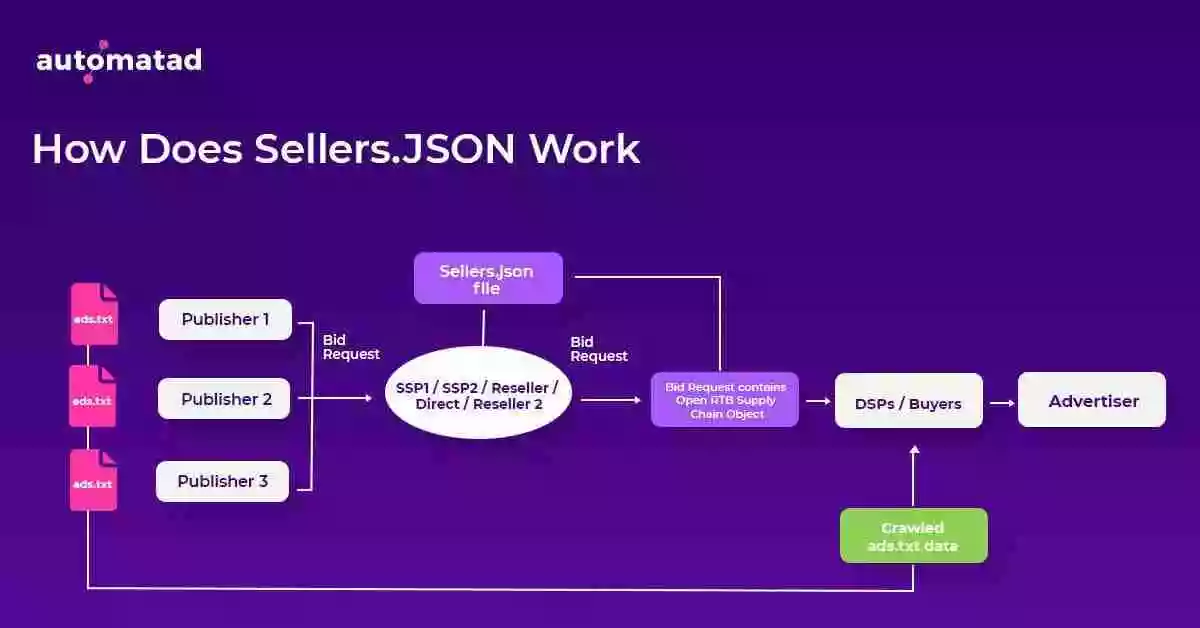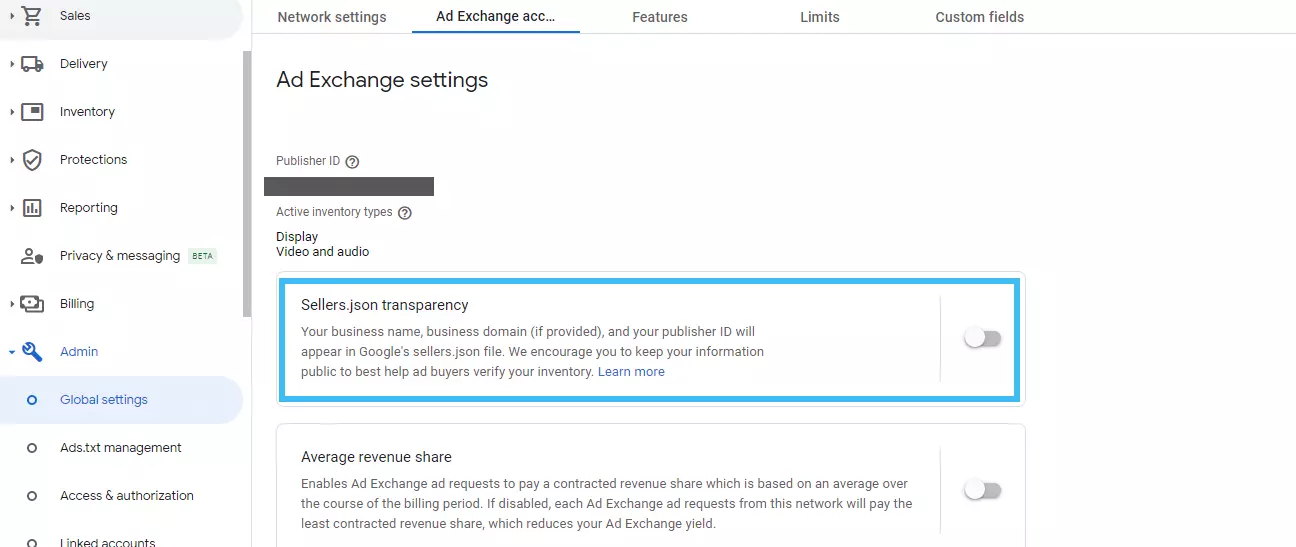Trust and transparency are the two most important attributes when you work in an extremely complex industry such as programmatic.
The programmatic industry typically involves publishers and buyers working with a vast number of ad-tech platforms and intermediary resellers who work with other resellers. The involvement of different sellers and resellers often results in a lack of transparency in who is selling whose inventory, and whether they are authorized or not.
Often, many fraudsters take advantage of such an opaque ecosystem and take a cut off the ad revenue on the way to the publisher. Over time, such situations erode the trust among the programmatic players, including publishers, advertisers, SSPs, DSPs, and more.
“In an average transaction, you work with a myriad of players and marketplaces — all of which are completely opaque—making it difficult for the publisher and other players in understanding each other.”
– Michael Zacharski, CEO of Engine Technology and EMX Digital (Src)
That’s why IAB is working towards offering improved accountability and increased transparency throughout the digital supply chain. This initiative first started with ads.txt in 2017. In July 2019, they also launched sellers.json and SupplyChain object as a part of the initiative. In this post, we will dig deeper into what sellers.json is and how it helps.
Table of Contents
What is Sellers.json?
Sellers.json is a JSON file hosted on SSPs’ website that contains the list of all authorized direct sellers or intermediates. It, along with the OPENRTB supply chain object, allows the identification of all the intermediary ad tech vendors that participate in the auction.
Thus, enabling increased transparency in the entire programmatic ecosystem and the ability to identify and prevent fraudulent or unauthorized supply sources.
The goal: to give ad buyers visibility into each step from sending a bid response to serving an ad by the end-publisher. Thus, a better understanding of where their money is going.
This file will also enable DSPs to make better buying decisions for their advertisers.
Let’s understand it better with an example.
Imagine a user visits your website. When this happens, a bid request is sent to all the advertisers to return their bids in order to serve their ads. The advertiser with the highest bid wins. Helping the advertisers to seamlessly bid and find the direct and safe path of selling is the sellers.json file.
The presence of sellers.json would give your advertisers an idea of how many paths they’re going through to purchase the ad inventory.
They can also be aware of any shady player’s presence. If advertiser bids on your inventory for a dollar, with the shady players’ presence there are chances it might get cut down to 50 cents before it reaches you.

Ok, so what if there are multiple intermediaries involved?
This is where the SupplyChain object comes into play. SupplyChain object gives the final view of where and how the ad buyer’s money is traversing for that particular bid request. It’s a set of nodes that represent entities such as SSPs\exchanges that participate in the auction.
This SupplyChainNode includes the following attributes:
- ASI(Advertising System Identifier) – the domain name of SSP or the seller.
- SID (Seller ID) – identifies the seller\reseller of the inventory; This must contain the same value used by the SSP in the sellers.json file to address publishers and intermediaries.
- RID (Request ID) generated by the seller.
- NAME and DOMAIN – this value is the same for both the sellers.json file and SupplyChain Object.
This object is important when the SSP doesn’t have direct integration with the publisher. When combined together, the sellers.json and SupplyChain object enable buyers to see all the parties participating in the selling or reselling of bid requests.
“This creates a lot more confidence around the reseller pipes. It will be firmly on the DSPs using this extra information to do the checking,” If they should find there is a vendor in there that shouldn’t be, they can block it,”
-Matt McIyntre, Head of Programmatic, EMEA, Essence (Src)
How Is It Different From IAB’s Ads.txt?
The best way to differentiate sellers.json and ads.txt is that sellers.json is a JSON file on the SSP’s website that tracks where the advertising money went, whereas ads.txt is a text file on the publisher’s page that shows who is authorized to sell their ad inventory.
Although ads.txt has been extremely successful, it fails in revealing the identities of the resellers within the advertising platform. Despite these differences, both files — ads.txt and sellers.json — have the same goal of providing the entire picture of the supply chain.
How Does Sellers.json Work?
Sellers.json acts as an ID card for every adtech entity participating in the selling process, and it works well with the current version of the Open real-time bidding framework 2.5.
The sellers.json file should include the following fields:
| Field | Description |
| seller_id | A unique 16-digit code, e.g., pub-1234567890123456. |
| seller_type | PUBLISHER or INTERMEDIARY or BOTH. If you own the site and you’re monetizing, then you’re classified as PUBLISHER. If not, then you’re an INTERMEDIARY. And if you belong in both categories, you’re classified as BOTH. |
| is-confidential | Indicates whether the identity of the seller is confidential, where 0 = is not confidential and 1 = is confidential.
It’s optional. |
| name | Seller name. This is the name shown in either the “Name and address” section or the “Business name and address” section of the payments profile. |
| domain | Name of the seller’s domain. This is the domain that advertisers can use to learn about the seller’s business, say a publisher or intermediary. |
In Sellers.json, SSPs or exchanges will have to list all their authorized resellers and publishers along with their seller ID and any other detail of the partner. Every seller_id must map to a single reseller or publisher, and a single entity shouldn’t have multiple seller_id within an advertising system.
Following are the details that the SSPs store:
- Name of the publisher
- The domain of the publisher
- Account id
- type of relationship (eg., sellers or resellers)
Example: When a publisher makes their information transparent in the Google sellers.json file, an advertiser get to see this:
“seller_Id”: “pub-1234789066554848”,
“seller_Type”: “PUBLISHER”,
“name”: “Publisher’s company name”,
“domain”: “example.com”

Why Is Sellers.json Important?
Knowing exactly who is participating in the sale of an impression helps your advertisers prevent fraudulent traffic or content. This will build trust between advertisers and you thus driving more revenue from them. It also increases accountability and incentivizes sellers to act honestly and provide value.
With sellers.json, you can help your ad partners to reach their audience most efficiently. Your partners can have a better understanding of the supply-path and focus more on paths that give the most value for every dollar spent. With better transparency, advertisers get better ROI and publishers better revenue.
As a platform that connects to hundreds of publishers directly, we wanted to be a part of the initiative and we’re proud to share that Automatad adopted IAB Tech Lab’s specifications for Sellers.json and SupplyChain Object. Read more about it here
What Does The Sellers.json Mean For Publishers?
Using sellers.json is beneficial to everyone in the programmatic landscape, especially publishers and advertisers. The only people that suffer are players who perform suspicious activities or are not authorized for selling the inventories in the first place.
But, these two IAB specifications are to be implemented by DSPs, SSPs/exchanges, and ad servers, and publishers have nothing to worry about, other than making their information visible to the programmatic system.
It’s a simpler way for publishers like you to create the cleanest and secure path for advertisers in the supply chain to buy your ad inventories.
Of course, this file is more relevant to ad buyers, as it allows them to evaluate whether the ad inventory that they are bidding for is an authorized entity or not. But using sellers.json gives your advertisers a reliable way to verify your identity and you to build that trust with them.
How can Publishers Enable Their Identity?
Publishers can enable their identity on Google’s Ad Exchange Sellers.json file via Google Ad Manager. Here’s how you can do it:
- Go to Google Ad Manager.
- Select Admin > Global settings > Ad Exchange account settings.
- Click on toggle Sellers.json transparency, and Save the settings.

Once the changes are done, your business name, domain, and publisher ID will appear in the sellers.json file. You can then check your business name in Google Ad Manager > Billing > Payments > Payment profile rules in “Business name and address”.
Sidenote: Enabling it here will only make your identity visible on Google’s Exchange sellers.json. Other SSPs/Ad Exchanges you work with will have their own sellers.json files and you have to check and take the steps (if any) to make your identity transparent for buyers bidding via their systems.
What’s Next?
Today, the ad tech industry has matured and is focusing more on becoming transparent, efficient, and driving value. Having sellers.json and ads.txt as a stamp of transparency allows both the supply and the demand side of programmatic advertising to be presented as high-quality vendors. Thus, we can only hope that IAB and other organizations keep on finding ways to promote transparency and efficiency for the complex programmatic ecosystem.
Want to learn more about IAB’s initiatives such as OpenRTB 3.0, then you can check and subscribe to our Decode Series Newsletter.























